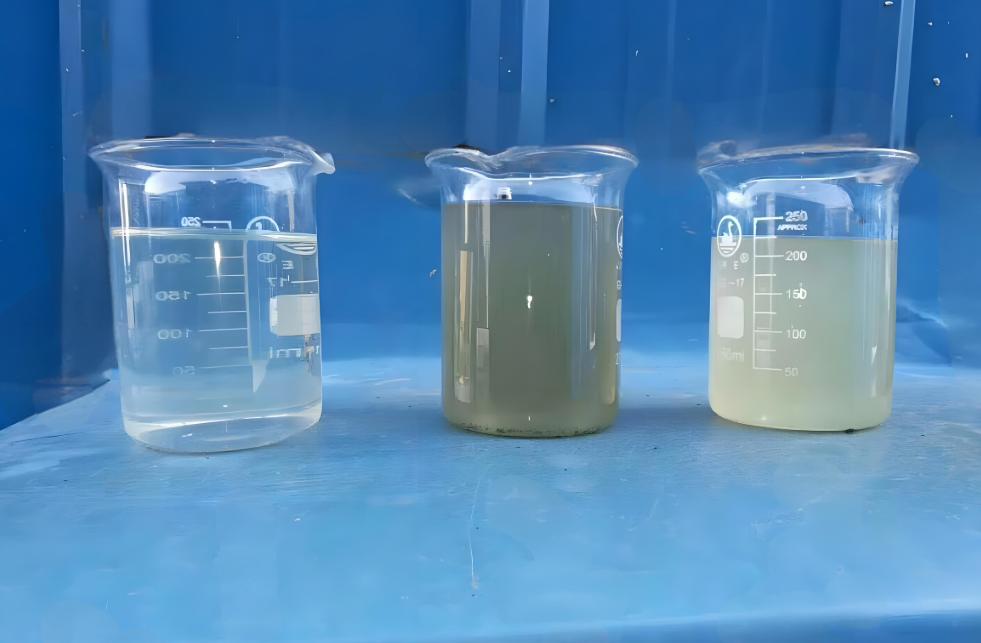Turbidity is a physical quantity used to measure the degree of turbidity of a liquid caused by suspended particles in the liquid, usually reflecting the clarity or turbidity of the liquid. The following is a detailed introduction to turbidity:

I. Basic concepts
Turbidity is caused by suspended particles in the liquid (such as soil, colloids, microorganisms, organic matter, inorganic matter, etc.). These particles will scatter or absorb light, making the liquid less transparent. Unit: NTU (nephelometric turbidity unit) is commonly used, and FTU (Formazin Turbidity Unit) can also be used. The two values are close and are often used in practical applications.
II. Measurement principles and methods
1. Measurement principle
Turbidimetry (turbidimeter method): by measuring the turbidity value generated by the scattering of suspended particles when light passes through the liquid. When light is irradiated into the liquid, the suspended particles will scatter the light. The instrument detects the intensity of the scattered light and converts it into a turbidity value.
Visual method: By comparing with a standard turbidity solution (such as a formazin standard solution), the turbidity of the liquid is subjectively judged. The accuracy is low and it is only used for rough estimation.
2. Common instruments
Turbidimeter: A common instrument used in laboratories or on-site, divided into portable and desktop types, which can quickly read NTU values.
Spectrophotometer: Indirectly estimates turbidity by measuring the absorbance of light of a specific wavelength, but it needs to be converted in combination with a standard curve.
III. Application areas
1. Environmental and water quality monitoring
Drinking water safety: Turbidity is an important indicator of drinking water quality (for example, my country's "Sanitary Standards for Drinking Water" stipulates that turbidity is ≤1 NTU, and ≤5 NTU in special cases). High turbidity may indicate the presence of bacteria, viruses or harmful chemicals, and treatment needs to be strengthened.
Sewage treatment: Used to evaluate the removal effect of suspended solids in sewage and guide the optimization of water treatment processes (such as coagulation, sedimentation, filtration, etc.).
Natural water monitoring: Changes in turbidity in rivers, lakes, and oceans can reflect sediment content, algae reproduction (such as red tides) or pollution events.
2. Industrial production
Food and beverage industry: Detect the clarity of juice, wine, mineral water, etc. to ensure product quality.
Pharmaceutical industry: Control the particle impurities of injections, eye drops and other liquids to meet the pharmacopoeia turbidity standards.
Chemical and petroleum: Monitor the concentration of suspended solids in industrial wastewater, or the purity of liquids in the production process (such as cutting fluids, electroplating fluids).
3. Scientific research and other fields
Biological research: Determine the growth density of microorganisms (such as bacteria and algae) by turbidity (such as OD value measurement).
Soil science: Analyze the turbidity of soil leachate to evaluate soil erosion or pollutant migration.
IV. Influencing factors and precautions
1. Factors affecting turbidity
Suspended particle characteristics: particle concentration, size, shape, refractive index, etc. For example, fine colloidal particles scatter light more easily than coarse particles, resulting in higher turbidity.
Liquid properties: color, viscosity, temperature, etc. may interfere with the scattering or absorption of light.
Lighting conditions: Different wavelengths of light (such as red light, blue light) have different scattering efficiencies in liquids, and the instrument needs to be calibrated for a specific wavelength (usually 860 nm infrared light).
2. Notes
Sample processing: Avoid shaking the sample violently before measurement to prevent air bubble interference; if the liquid contains color, color compensation or correction using a specific method is required.
Instrument calibration: Regularly calibrate the instrument with a standard turbidity solution (such as formazin solution) to ensure accurate data.
Result interpretation: Low turbidity does not mean that the water quality is absolutely safe (such as the possible presence of soluble pollutants), and a comprehensive assessment must be made in combination with other indicators (such as COD, heavy metals, and microorganisms).
V. Difference from other indicators
Turbidity vs. suspended solids (SS):
Suspended solids are mass concentrations (mg/L) measured by filtration and weighing; turbidity is an optical property that reflects the ability of particles to scatter light. The two are somewhat correlated, but not proportional (e.g., colloidal particles have high turbidity but low mass).
Turbidity vs. chromaticity:
Chroma is caused by dissolved colored substances (e.g., humic acid, metal ions), and turbidity is caused by suspended particles. The two can exist independently (e.g., colored transparent liquids have high chromaticity but low turbidity).
By monitoring turbidity, the cleanliness of the liquid can be quickly assessed, providing key data support for water quality management, industrial production, and scientific research.



